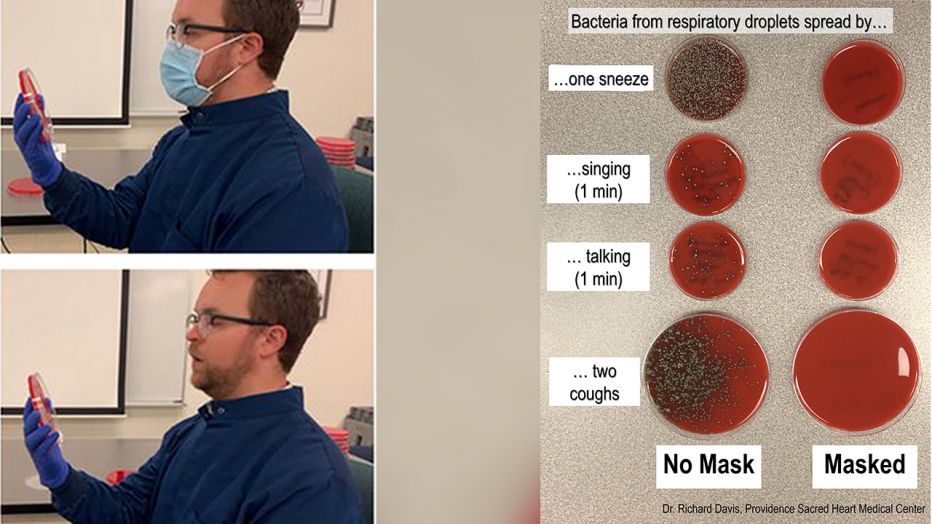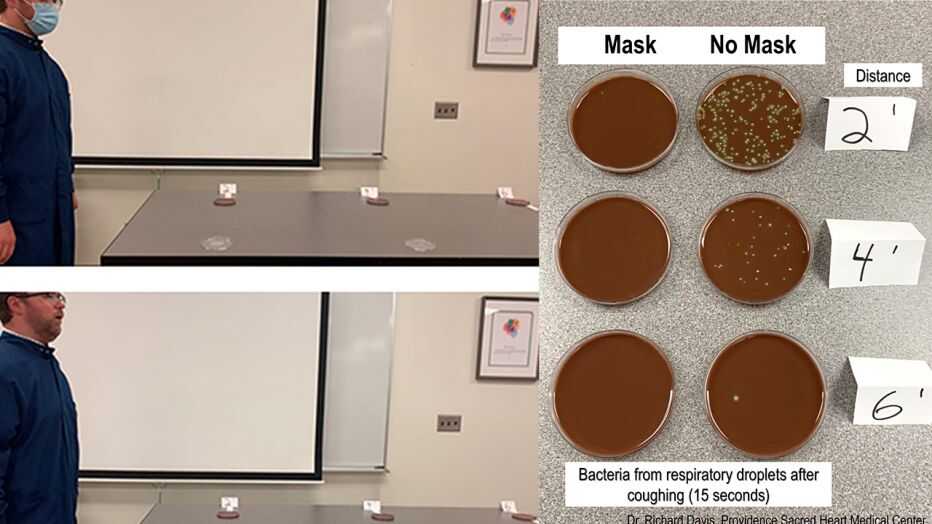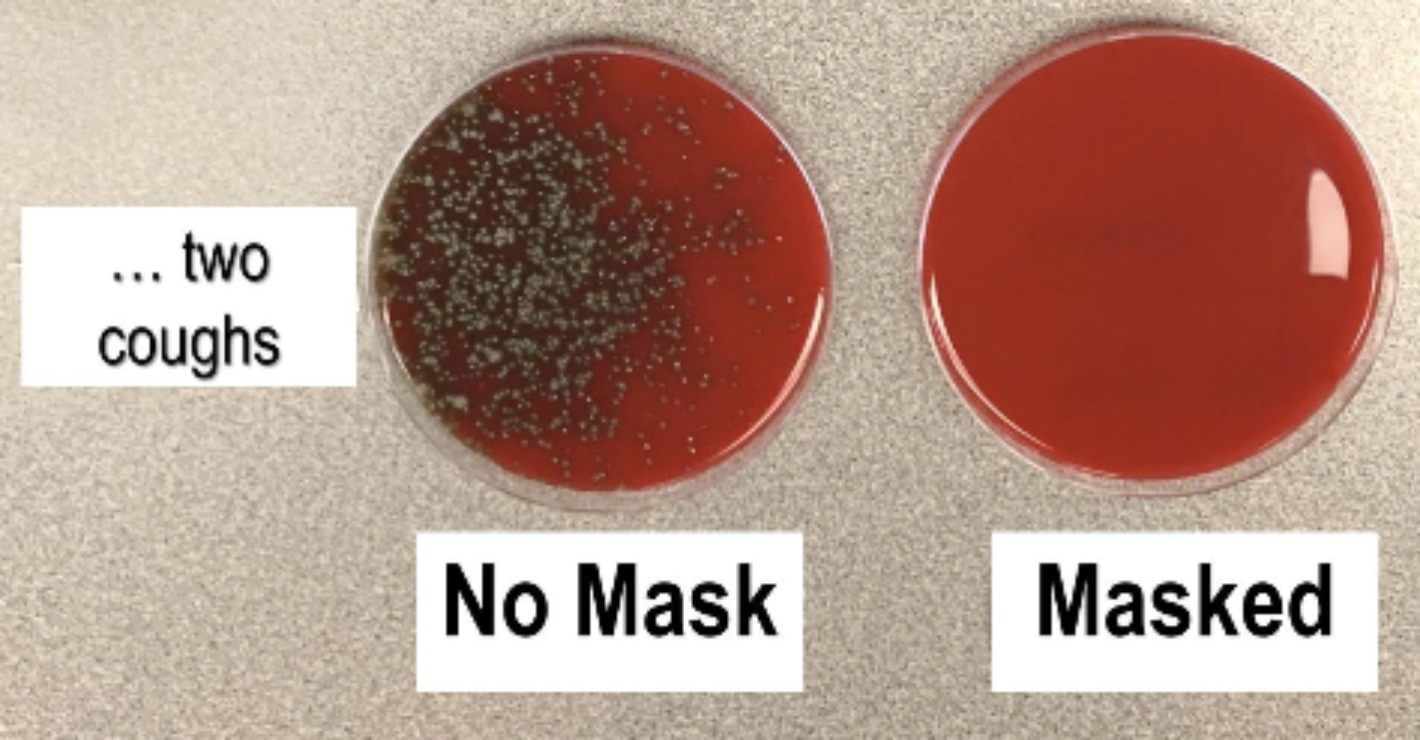Doctors are advising the residents to wear masks in public ensuring to stop the surge in coronavirus cases. Perhaps, the re-openings of the states across the U.S. can easily lift up the stable situation into worse.
One medical expert who has a widely-shared Twitter thread demonstrates the effectiveness of wearing a facial covering amid a pandemic that is far from over.
This comes after a clip from the popular TV show Parks and Recreation went viral on Twitter. Actor and producer Law Sharma, posted his Parks and Rec/face mask mashup. The clip shows how people are complaining about having to wear facemasks to keep themselves and others safe.
People are worried about wearing facemasks as it may cause negatively affects a person’s oxygen levels. Now, medical professionals are taking the help of social media to dispel the myth. Doctors have demonstrated why wearing a mask, really makes a difference during the coronavirus pandemic.
Masks do not drop your oxygen levels pic.twitter.com/0Ynb7VjKqa
— Amanda Deibert (@amandadeibert) June 26, 2020
Dr. Richard Davis has recently shared a series of photos on Twitter to showcase demonstrations that aim to understands how effective face masks are. He is a Clinical microbiology lab director at Providence Sacred Heart Medical Center in Spokane, Washington.
Experiments were performed to debunk the myth
The images of the experiment showed that every action performed unmasked nearly covered each Petri dish in bacteria. While the dishes used during the masked demonstration were left nearly untouched. Sneezing and coughing left the most noticeable difference on the plates.

He perfectly elaborated how masks can block respiratory droplets from an individual’s mouth as well as illustrates the importance of social distancing. He captioned the post –
“What does a mask do? Blocks respiratory droplets coming from your mouth and throat.”
Then continues discussing two simple demos, starting with showing the significance of the mask that decreases the growth of bacteria.
“Two simple demos: First, I sneezed, sang, talked & coughed toward an agar culture plate with or without a mask. Bacteria colonies show where droplets landed. A mask blocks virtually all of them.”
What does a mask do? Blocks respiratory droplets coming from your mouth and throat.
Two simple demos:
First, I sneezed, sang, talked & coughed toward an agar culture plate with or without a mask. Bacteria colonies show where droplets landed. A mask blocks virtually all of them. pic.twitter.com/ETUD9DFmgU
— Rich Davis, PhD, D(ABMM), MLS🧫🦠 (@richdavisphd) June 26, 2020
The doctor then followed up providing a second demonstration of how a mask can be more effective when coupled with social distancing. He wrote –
“What about keeping your distance?
“Second demo: I set open bacteria culture plates 2, 4 and 6 feet away and coughed (hard) for ~15s. I repeated this without a mask. As seen by number of bacteria colonies, droplets mostly landed <6ft, but mask really blocked all of them.”
What about keeping your distance?
Second demo: I set open bacteria culture plates 2, 4 and 6 feet away and coughed (hard) for ~15s. I repeated this without a mask.
As seen by number of bacteria colonies, droplets mostly landed <6 ft, but a mask blocked nearly all of them. pic.twitter.com/8wDdvIHHMa
— Rich Davis, PhD, D(ABMM), MLS🧫🦠 (@richdavisphd) June 26, 2020
Using a standard triple-layer hospital issue surgical mask, Davis performed the task twice firstly with and afterward without a mask.
He then sneezed, sang, talked, and coughed toward an agar culture plate to see the difference in the results. Davis noted in his Twitter thread that he sang Hamilton’s “Dear Theodosia” for the singing portion of the experiment.
Second Demonstration
In the second demonstration, Davis showed how keeping one’s distance makes a difference in stopping the spread of respiratory droplets.

But no matter the distance, the demonstration showed that a mask nearly completely blocked bacteria from landing on the plates. It can be easily noted that besides the actions shown in the demonstration, the simple act of breathing is also a source of spreading respiratory droplets.
Doctors also suggested that for people who complain of discomfort or difficulty breathing while wearing a mask, there are other protective options.
The U.S. Centers for Disease Control and Prevention highly recommends wearing a cloth face protective mask. Especially while in public to help combat the spread of COVID-19. And more importantly in those places where social distancing measures can be difficult to maintain.



